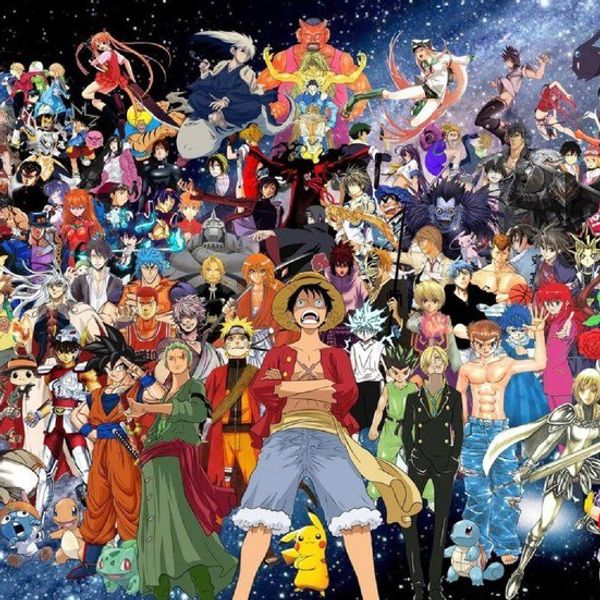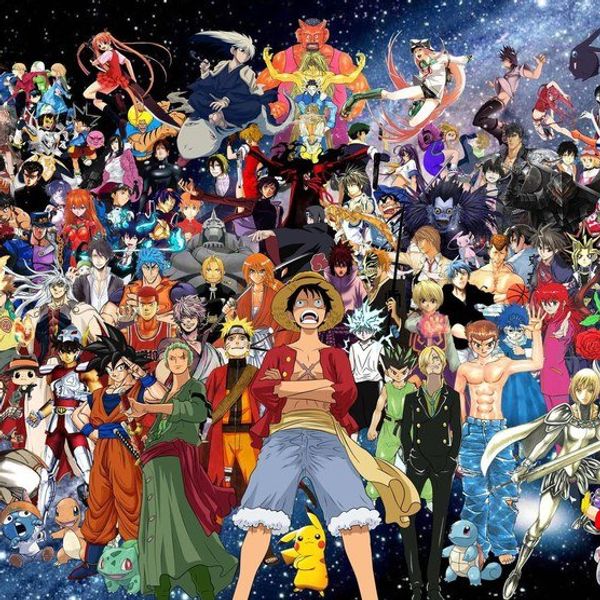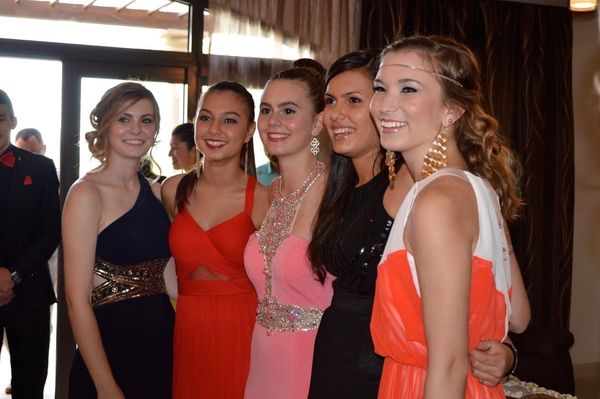Boys Love, Shounen-Ai, Shoujo-Ai, Yaoi, and Yuri. These are some of the many genres that exist in the anime and manga world as pillars of queer representation, showcasing romance between characters of various LGBTQ+ orientations and identities. As many people who are fans in the anime and manga world may be aware, queer representation has a different presence than in other types of media and is treated a little differently, as one might expect. Anime and manga have categories that are exclusively dedicated to queer relationships and characters, much like any other sort of media, but it would not be out of the question to say that in anime and manga, queer characters and relationships are much more popular world wide than novels in the same category. LGBTQ+ people who are looking for representation will find an abundance in manga particularly, unlike Western novels which tend to have a scarce population of LGBTQ+ characters, let alone entire books dedicated to the lives and relationships of an all or mostly queer cast. This is mostly due to the way that sexual orientation and identity were viewed in early Japan. Prior to the Meiji Restoration during the time of the Tokugawa Shogunate and the infamous era of samurai, same-sex expression was not viewed as sinful, impure, or any sort of evil as it was in the West. There were socially acceptable outlets for homosexual relationships among the samurai and in Kabuki culture, even if everyone was still expected to enter into a heterosexual marriage as a formality to produce progeny and for strategic reasons such as alliances and social class advancement. Homophobia wasn't "imported" until the late 19th century when Japan opened its borders in 1868 following the fall of the Tokugawa and began to trade and exchange more and more with Western countries. Instead of being seen as a "sin" even after this idea came to Japan, it became more of a social conformity issue rather than a "you're going to hell" issue. So, while it did become taboo to be openly queer, and for awhile it was also censored in media, over time, the censorship particularly regarding inclusion in anime and manga, began to die off. However, it had a slow start and did not really start to gain any significant presence as its own genre or otherwise until the 1970s when the first Boy's Love doujinshi, or fan comics, started to appear, setting up the scene for BL, Yaoi, Yuri, Shounen-Ai, and Shoujo-Ai to establish themselves as mainstream genres. Within the next two decades following that in the 1990s came some very progressive and bold inclusion of the time that for many LGBTQ+ Millenials provided much needed media representation at a young age that was presented outside of a purely romantic, Slice of Life based genre. The ever popular children's series Sailor Moon is one such example. Sailors Neptune and Uranus are famous for being one of the first and most iconic lesbian couples in anime and manga. In Japan, this was kept as is in the anime adaptation of the manga, however because of restrictive views on homosexuality portrayals in the West, the original English dub of the series changed their relationship to "cousins". Thankfully, there has been enough progress now that in the recent reboot Sailor Moon: Crystal, that has been corrected so that they are lovers once again. Other anime and manga from the 90s that were ground breaking with their LGBTQ+ representation outside of the typical LGBTQ+ spheres were Revolutionary Girl Utena, Neon Genesis Evangelion, and Cardcaptor Sakura.
The presence of LGBTQ+ exclusive romance-oriented genres aside, it has usually been rather difficult to find canonically queer characters outside of the genres that revolve around LGBTQ+ characters and their romances almost exclusively. This lack of crossover can be particularly disheartening to LGBTQ+ people who are fans of anime and manga since many of us look for representation in the media. We like to see characters that are like us, just as much as straight, cis-gendered people do, and we like to see them in just as much genre variety. Fortunately, I have noticed since about the mid-2000s and in the last couple of years especially, that there seems to be more and more anime and manga that is produced that feature characters that are either explicitly explained to be LGBTQ+ in some way or another, or it is made undeniably clear by directors, writers, or producers, even if those words are never spoken by the characters themselves. I feel it is important that more and more series pop up that introduce characters of varying gender identities and sexual orientations outside of the specifically designated genres and in situations where their relationship and the romance is not the center focal point of the series. Some series that do this very well are No. 6, where the relationship between Nezumi and Shion is undeniably present as well as Nezumi's non-binary gender identity leanings, but that is not the main point of the story. It isn't treated as an after thought, but it is treated as a sub-plot that adds dimension to the characters and the story line. Other series that take this same approach are Attack on Titan with Krista and Ymir, Samurai Flamenco with both Goto and Masayoshi and Moe and Mari, and Psycho Pass with Shion and Yayoi. In some series, they do not pair up the queer characters necessarily, but they make their identities clear and an important part of their individual identities, as they should. A good example of this is in this Spring's recent Studio Trigger addition, Kiznaiver. Maki Honoka is shown to be canonically bisexual or pansexual when her backstory exposes that she still harbors feelings for a girl in her past that she grew romantically attached to and then was tragically separated from. Those feelings combined with the guilt she feels regarding some circumstances concerning the girl she was in love with are her "hang-up" so to speak that are making it difficult for her to reach out and connect with other people. By the end of the series, it is implied that she has reconciled her feelings and seems to be interested in one of the boys of the group. Tiger & Bunny also takes part in the LGBTQ+ representation in the form of powerful and flamboyant super hero, Nathan Seymour, better known as Fire Emblem. Now, while those all may be some great examples of mostly queer sexual orientations, they don't have a lot to do with gender identity. However, there are some that address this as well! One manga that has become particularly well known over the years for its progressive decision to have not just one transgender character as the protagonist but two, is Wandering Son by Takako Shimura. This manga became famous for its dealings with transexualism, transgender issues, gender identity, and growing up trans. A more recent example is found in last Fall's Rakudai Kishi no Cavalry in which we are introduced to a transfemale character named Alice. She is shown to be very powerful, smart, funny, and is included in the main character "friend group" so she is seen often. She becomes close friends and roommates with the male protagonist Ikki's little sister Shizuka and is treated remarkably well by those she meets and befriends. No one tries to use male pronouns, force her to have a male roommate, or even use the male bathrooms if she doesn't want to. Needless to say, I was quite happy to see the way she was treated in this series. Now onto non-binary representation. These characters tend to be almost as rare as transgender characters and can be even harder to identify. However, three stand out in particular. Perhaps the most well known of the three examples that will be given is none other than Haruhi Fujioka from Ouran High School Host Club. Haruhi is known to be gender non-conforming of some sort. Usually, when Haruhi is seen, they appear to be male presenting, but other times for one reason or another, they present as female. However, Haruhi is completely fine with this even being well known for saying something to the effect that gender doesn't really matter, the person inside does. Gekkan Shoujo Nozaki-kun's Yuu Kashima is thought to be gender fluid by many, although official conformation still seems to be pending. They don't address themselves as being especially male or female but often seem to go between the two. They wear a sort of mix of the male and female school uniform and is seen as a handsome prince who charms all the girls. Kashima embraces this, but does not say that they think of themselves as strictly a boy or girl, instead seeming to go in between whenever they feel like it. The last and most recent example is that of Aoharu x Kikanjuu's Hotaru Tachibana. Hotaru addresses themselves using only their last name so as to avoid even using any gendering pronouns. They also prefer to dress and present as male, but they were born assigned female at birth (AFAB). They feel obligated to let people know they are AFAB, but they do not go out of their way to tell people in any way what their gender is, and instead lets most people think whatever they want to think. Hotaru's gender identity is actually the source of one of the main obstacles in the series, but it is not because anyone has a problem with them being non-binary, which is good to see. Overall, while anime and manga has come a long way in LGBTQ+ representation and portrayal, especially outside of the designated primary genres, there is still plenty to be improved upon and numbers to be increased, but I have high hopes for the future of representation in anime and manga both as a fan of the art forms and as a member of the LGBTQ+ community.





















